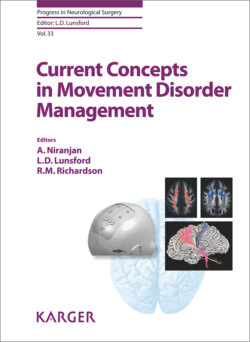Читать книгу Current Concepts in Movement Disorder Management - Группа авторов - Страница 26
Introduction
ОглавлениеMovement disorders are common problems and have, for a long time, been among the most therapeutically tractable neurologic diseases. Most of the available medical or surgical treatments were, however, empirically developed. Recently, this has begun to change, as researchers have gained greater insights into the brain mechanisms that are responsible for the disordered movements in these diseases. Movement disorders can be “understood” from various perspectives, ranging from molecular events involved in their pathogenesis, to their clinical manifestations and consequences. This chapter focuses on the intermediate level of analysis of these diseases, that is, the level of brain circuit dysfunction. After a brief discussion of the relevant brain anatomy, the pathophysiology of Parkinson’s disease (PD), dystonia, and essential tremor (ET) will be discussed in some detail.
Fig. 1. Cortico-subcortical circuits. Black arrows indicate inhibitory connections; gray arrows indicate excitatory connections. Basal ganglia, thalamus, and cerebellum are marked. CM/Pf, centromedian and parafascicular nuclei of the thalamus; Cereb. Cortex, cerebellar cortex; DCN, deep cerebellar nuclei; DP, direct pathway; D1, D1-like dopamine receptor subtype; D2, D2-like dopamine receptor subtype; GPe, external segment of the globus pallidus; GPi, internal segment of the globus pallidus; HP, hyperdirect pathway; IP, indirect pathway; PN, pontine nuclei; PPN, pedunculopontine nucleus; SNc, substantia nigra pars compacta; SNr, substantia nigra pars reticulata; STN, subthalamic nucleus; VA/VL, ventral anterior and ventral lateral nuclei of the thalamus.
